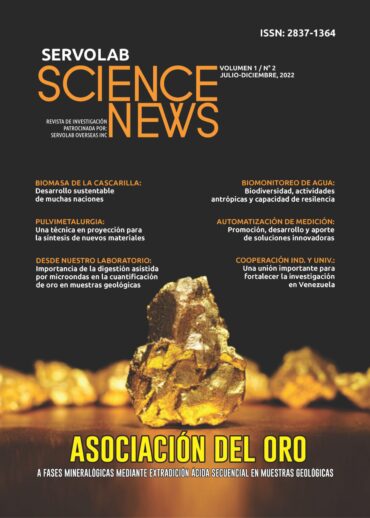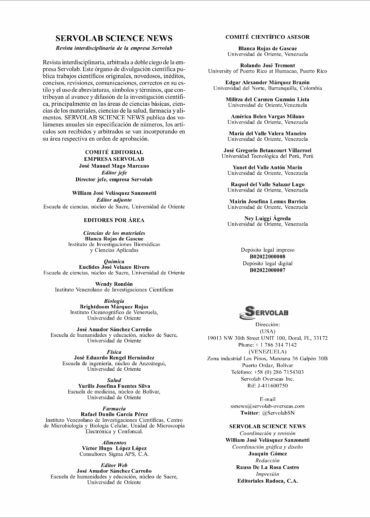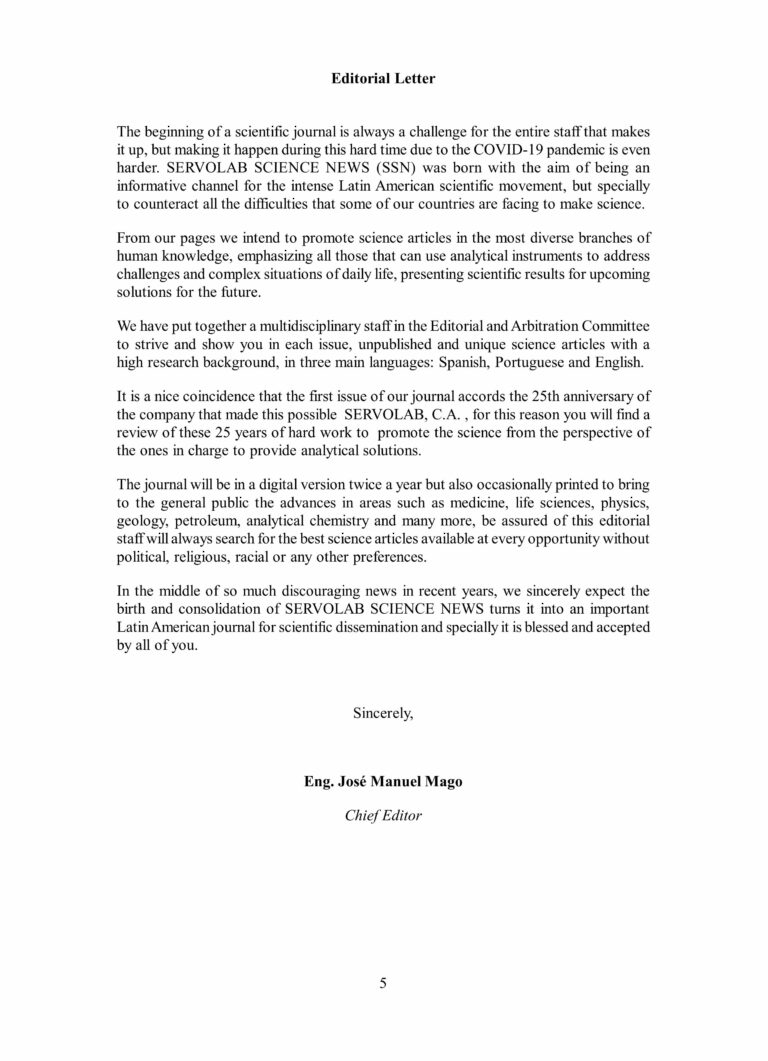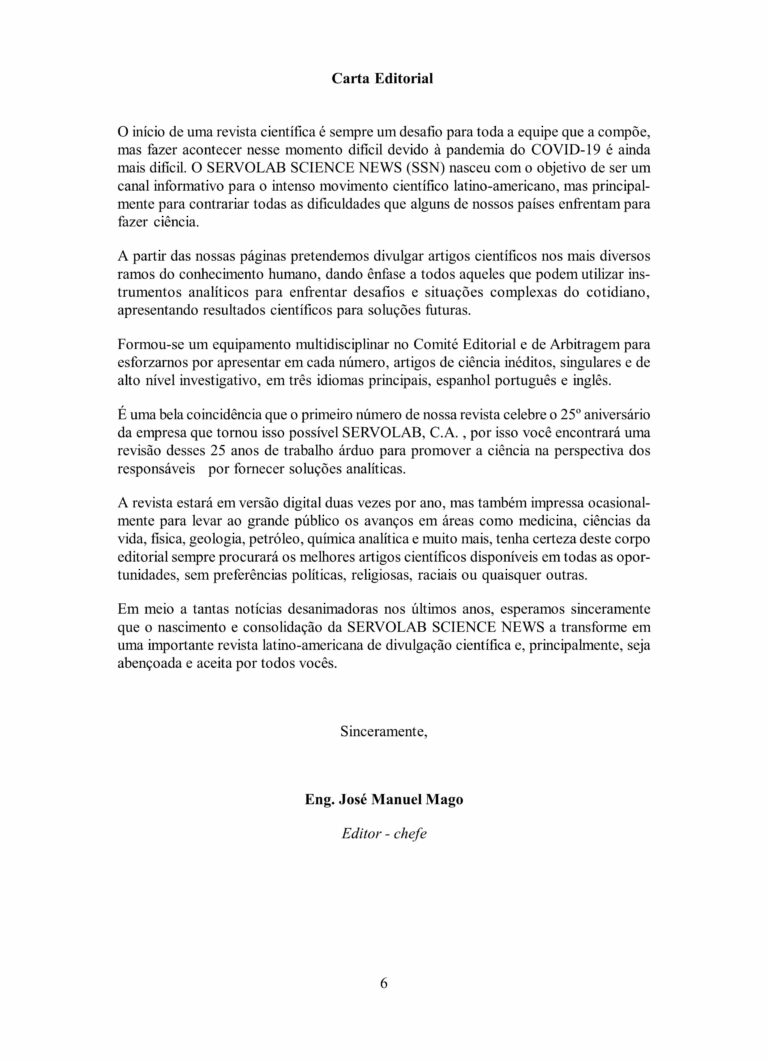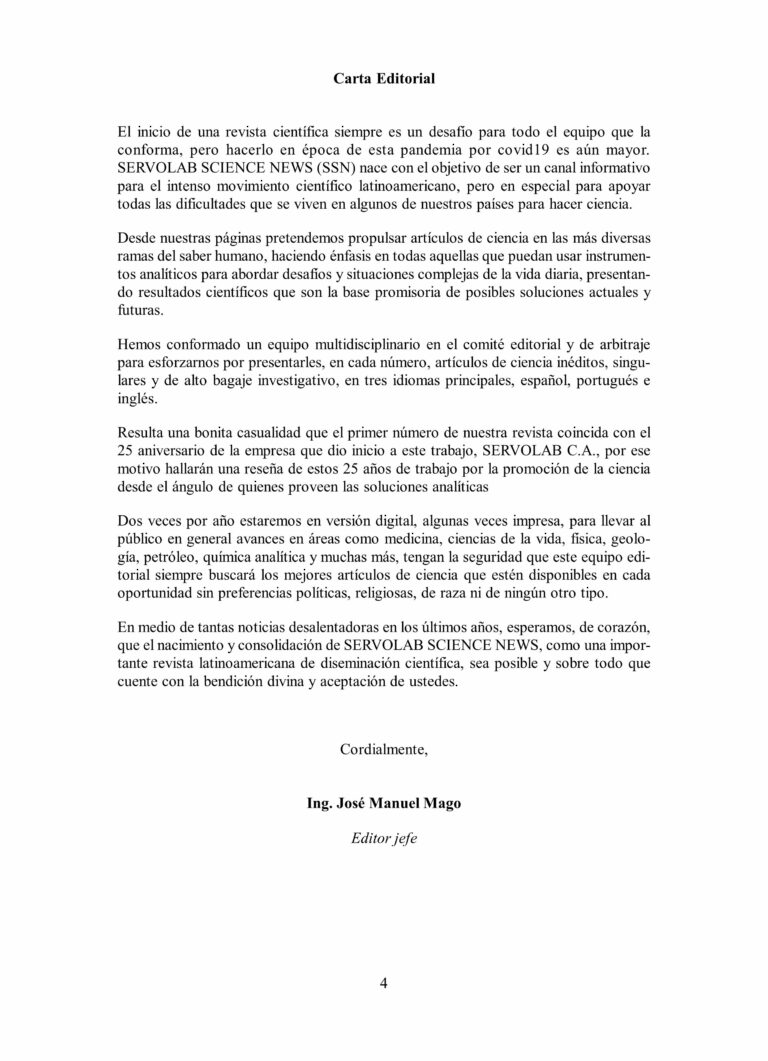Vol. 1, N°2 (2022) Julho-Dezembro
- Inicio
- Revistas científicas
- Vol. 1, N°2 (2022) Julho-Dezembro
Vol. 1, N°2 (2022) Julho-Dezembro
Leia mais sobre o
Publicado: (2022)
DETERMINATION OF GOLD IN GEOLOGICAL SAMPLES BY MICROWAVE DIGESTION. **USE OF MICROWAVE ASSISTED DIGESTION IN THE QUANTITATIVE DETERMINATION OF GOLD IN GEOLOGICAL SAMPLES**
DANIEL VILLARROEL¹, RICHARD HENRÍQUEZ¹, DANIEL GONZÁLEZ¹, EUCLIDES VELAZCO¹, JOSUÉ MAGO¹, JOSÉ MAGO¹
This report presents the use of the microwave assisted digestion technique using the MARS™ 2 microwave digester (Fig. 1a) for the subsequent quantitative determination of gold. This method shows the advantage of reduced sample digestion time when using microwaves. Two certified reference materials (CRMs) OREAS™ 239 and 256 were used for method evaluation. Quantification of the analyte is determined by flame atomic absorption spectrometry (FAAS) using a TM: NovaAA™ 800F spectrometer (Fig. 1b). The statistical analysis of the results obtained by FAAS showed that the average values did not differ from the values reported in the CRM certificates used, for a significance level of 0.05; Therefore, the acceptance criterion is met. Therefore, the results are traceable. All measurements are within the reference value range of each CRM.
Key words: gold, microwave, digestion, geological material
ASSOCIATION OF GOLD TO MINERALOGICAL PHASES BY SEQUENTIAL ACID EXTRACTION IN GEOLOGICAL SAMPLES FROM BOLIVAR STATE, VENEZUELA
RICHARD RAFAEL HENRÍQUEZ TORRES¹, DANIEL ALEJANDRO GONZÁLEZ ENRÍQUEZ¹, DANIEL OSCAR VILLARROEL GARCÍA¹, EUCLIDES JOSÉ VELAZCO RIVERO¹, JOSUÉ DAVID MAGO ARREDONDO¹, JOSÉ MANUEL MAGO MARCANO¹
It was established a mineralogical association of gold (Au) in three (3) geological samples from the southeast zone of Bolívar state, Venezuela, by means of sequential acid digestion process in open vessel with 1.00 mol/L hydrochloric acid HCl; concentrate nitric acid (HNO₃) and aqua regia (HCl: HNO₃ 3:1). The percentage of recovery of Au in every extracted fraction was estimated by flame atomic absorption spectrometry (FAAS). The HCl fraction did not show presence of Au; while in the HNO₃ fraction the recovery was in order of 12.38% for the zone 1; 0.87% for the zone 2 and 4.00% for the zone 3. By means of X-ray Diffraction (XRD) identification of the original samples was established that around 50.00% of the samples is ferrodolomite; while the analysis of solid residues of every digestion determined that in the HCl fraction this mineral and calcite (from zone 3) were dissolved and in the HNO₃ fraction pyrite and chlorite-serpentine were dissolved; while the silicate phases remained undissolved: quartz, albite, muscovite, microcline and orthoclase. By Scanning Electron Microscopy (SEM) and X-ray Energy Dispersion Spectroscopy (EDS) was established the mineral distribution in the samples and they could correlate with the results by XRD. The research carried out established that most of the Au in the studied zones is found mostly associated with the silicate phases.
Key words: Gold, sequential extraction, acid digestion
BIOGENIC SILICA NANOPARTICLES: SYNTHESIS, CHARACTERIZATION AND FRAMEWORKS FROM RICE HUSK BIOMASS. REVIEW
JOSÉ DANIEL OCA RONDON¹, MAIRUBIS LEÓN¹, ANA CHIRINOS¹, JUAN CARLOS PEREIRA¹\*
The use of plant biomass to produce nanomaterials has captured the attention of researchers in recent decades and has encompassed scientific, economic, social and environmental aspects, promoting the sustainable development of many nations. Among the variety of agricultural residues or biomass available, rice husk occupies a privileged place not only because of the number of tons per year produced worldwide, but also because of the characteristics that it presents associated with its chemical properties for the production of building materials mesoporous silica. The production of these materials depends largely on the physical and chemical treatments used and the reactions involved in the process such as thermal and reduction treatments. This article reviews the processing of rice husks for the production of silica-based mesoporous nanomaterials. Also, the furnace/reactor thermal method (pyrolysis) of processing silica nanoparticles (SiO₂) from rice husk ashes is addressed, analyzing the influence of physical, chemical and thermal factors in the production of this material type.
Keywords: Rice husk, silica nanoparticles, plant biomass, physicochemical treatments, mesoporous silica.
SYNTHESIS BY MECHANICAL ALLOYING OF AN ALLOY AlZnMgCu: KINETIC CHARACTERIZATION OF THE A η’ PHASES
MARÍA DEL VALLE VALERA MANEIRO¹, NEY JOSÉ LUIGGI AGREDA¹
The synthesis of aluminium (Al) alloys is usually carried out by melting the alloying elements, being the temperature and subsequent treatments responsible for the final microstructure of the alloy. However, the cold amalgamation of the alloys, in the form of mechanically assisted powder, has revealed different microstructures and a greater solubility between the constituent elements. Under this premise, it was synthesized an Al-Zinc(Zn)-Magnesio(Mg)-Cobre(Cu) alloy by mechanical alloying with proportions similar to those of the commercial alloy AA7075 and identified in its microstructure the presence of the phases and the possible mechanisms of their formation. A kinetic study based on the analysis of thermograms obtained by differential scanning calorimetry, isolating each precipitated phase and separating them by deconvolution in simple reactions that we associate to the mechanisms responsible for this reaction has been carried out. In this analysis, asymmetric Weibull transfer functions and the Sestak-Berggren (SB) scheme were used to obtain the kinetic triplet. Results are compared with those obtained on a commercial heat-treated AA7075 alloy similar to mechanical alloy prepared in this research. The activation energy (Q) for η’ phase precipitation of (77,00 ± 3,00) kJ/mol, obtained by applying the method described in this work, agrees with that reported by other authors and is a consequence of the diffusion of Mg and Zn present in the alloy regulated by recrystallization and grain-joint diffusion mechanisms.
Keywords: Mechanical Alloy, AlZnMgCu, XRD, DSC, Activation Energy.
FUNDAMENTAL ASPECTS OF COOPERATION BETWEEN INDUSTRY AND UNIVERSITY: EXAMPLE OF THE CURRENT VISION IN VENEZUELA
JUAN CARLOS PEREIRA¹
Research in Venezuela comes from Venezuelan universities and recognized institutes and has been oriented to specific sectors. However, collaboration with the industrial sector has been carried out in various fields ranging from the simple to the complex. But without a doubt, there is still a lot to consolidate in this field. The present work shows the fundamental aspects of the collaboration between the industry and the university. Seen from a hybrid academic-industrial vision, key elements for the success of this cooperation stand out. Finally, an example of a Venezuelan case is shown, the PHD Laboratory to develop research work from the university to the industry.
Keywords: Industry, University, collaboration, university spin-off, research and development.
AUTOMATION OF THE PARAMETER MEASUREMENT SYSTEM IN AN EXPERIMENTAL TESTING CENTRIFUGAL COMPRESSOR ARMFIELD FM 12
YORDY GONZÁLEZ-RONDÓN
Experimental test benches for teaching and research are tools that promote the development of skills to identify problems and provide solutions that lead to innovation. This research is part of a test bench recovery project at the Center for Thermofluid Dynamics and Maintenance (CTYM) of the Universidad de Oriente. On this occasion, the development of an automated parameter measurement system is presented in an experimental test bench for an ARMFIELD FM 12 centrifugal compressor, selecting low-cost materials and electronic components that are easily accessible in the national market. The methodology is based on the study of the measurement system of the variables temperatures, differential pressure in the suction pipe to the compressor, differential pressure in the compressor and speed of the compressor through the frequency, as well as the calibration of the meters, the design and construction of a voltage source to feed the sensors, the construction of the interface that connects the parameter measurement sensors in the test bench with an NI 6009 data acquisition card, and the development of the graphical environment on a PC using the LabVIEW 8.20 tool available at CTYM. The results showed that during the gradual decrease of the power that feeds the motor that drives the compressor, the frequency that governs the rotational speed of the compressor decreased, the pressure drop in the orifice plate at the compressor suction also decreased due to the fact that the air flow in the pipeline became less and less, and the differential pressure in the compressor decreased by the change in pressure between the inlet and outlet of the compressor. These behaviors determined that the implementation of the new parameter measurement system in the ARMFIELD FM 12 test bench shows correct communication between the sensors and the graphical interface.
Keywords: Automation, metering, centrifugal compressor, testing bench.
BIOMONITORING OF WATER QUALITY IN THE RIVERS OF THE EASTERN PLAINS OF VENEZUELA
BRIGHTDOOM MÁRQUEZ-ROJAS¹, JORGE BARRIOS-MONTILLA²
Benthic macroinvertebrates are used as biological indicators in the evaluation of fluvial ecosystems, since their characteristics, special requirements and adaptations make these organisms sensitive to alterations in their habitat. A sampling of benthic macroinvertebrates was carried out in 12 rivers in the south of the states Anzoátegui and Monagas, Venezuela, to evaluate the quality of the waters using biological BMWP’ index and some community indices, as well as a physical-chemical characterization of the waters of every river. 20 orders of macroinvertebrates distributed in 24 families were identified; the families Leptoceridae, Hydropsychidae, Odontoceridae and Culicidae reported the largest number of individuals. The BMWP’ biotic index showed that more than 50.00% of the rivers studied were slightly polluted, with intermediate values (61.00–83.00). The Agua Clara Rivers and Chive river station 2 were the ones that presented the best environmental conditions, unlike the San Antonio River that presented the lowest values of the BMWP’ and diversity index, showing waters possibly affected by contamination. In general, most of the rivers evaluated presented an acceptable environmental quality, with the presence of numerous species of insects and other organisms, little affected by anthropic activities and with a great resilience capacity.
Key Words: Biological quality, BMWP index, benthic macroinvertebrates.

